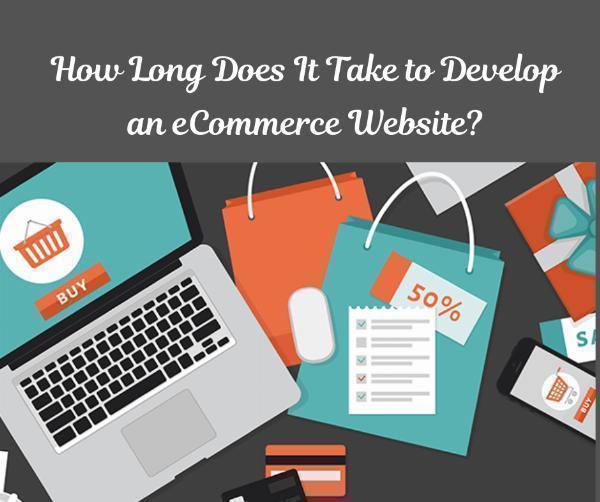How Long Does It Take to Develop an eCommerce Website?

Strong 8k brings an ultra-HD IPTV experience to your living room and your pocket.
Creating an eCommerce website involves a range of factors that influence the timeline of development. Whether you're looking to hire an eCommerce website development company in Dubai or are planning to handle the project in-house, understanding the stages of website development will help you gauge how long the process might take. This guide explores the key phases of eCommerce website development, helping you set realistic expectations and plan your project efficiently.
Initial Planning and Requirements Gathering
Duration: 1-2 Weeks
The first stage of developing an eCommerce website is planning and gathering requirements. This involves defining the scope of the project, identifying the target audience, and outlining the features and functionality needed for the site.
During this phase, you'll work closely with your chosen eCommerce website development company in Dubai to establish a clear vision for your website. This includes discussing website design preferences, technical requirements, and integration needs. The time required for this stage can vary depending on the complexity of your requirements and how quickly decisions are made.
Design Phase
Duration: 2-4 Weeks
Once the planning stage is complete, the next step is website designing. This phase focuses on creating the visual layout and user interface of your eCommerce site. The design phase typically includes:
Wireframes and Mockups: Initial sketches or wireframes are created to outline the layout and structure of the website. These are refined into detailed mockups that represent the final look of the site.
Design Revisions: Based on feedback, designers make necessary adjustments to ensure the design meets your expectations and is aligned with your brand identity.
The time required for website designing depends on the complexity of the design and the number of revisions needed. A more intricate design or multiple rounds of revisions will extend the duration of this phase.
Development Phase
Duration: 4-8 Weeks
The development phase is where the actual coding and implementation take place. This stage can be divided into several key areas:
Front-End Development: This involves coding the visual elements of the website that users interact with, such as the layout, buttons, and navigation.
Back-End Development: This focuses on the server-side components that handle data processing, database management, and integration with payment gateways and other services.
E-Commerce Functionality: Implementing essential eCommerce features such as product catalogs, shopping carts, user accounts, and checkout processes.
The duration of the development phase varies depending on the complexity of the website, the number of custom features, and the experience of the development team. A simple site with basic features may be completed more quickly than a complex site with advanced functionality.
Testing and Quality Assurance
Duration: 2-4 Weeks
Before launching the eCommerce website, it's crucial to conduct thorough testing and quality assurance. This phase involves:
Functional Testing: Ensuring all features and functionalities work as intended, including payment processing, product search, and user account management.
Performance Testing: Checking the website's performance to ensure it loads quickly and can handle high traffic volumes.
Cross-Browser and Device Testing: Ensuring the website is compatible with various browsers and devices, providing a consistent user experience.
Bug Fixing: Identifying and addressing any issues or bugs discovered during testing.
The duration of this phase depends on the number of issues discovered and the complexity of the testing process. Comprehensive testing is essential for delivering a high-quality website that performs well and provides a seamless user experience.
Launch and Post-Launch Support
Duration: 1-2 Weeks
After completing the testing phase, the website is ready for launch. This stage involves deploying the site to a live server and ensuring that everything is functioning correctly. Post-launch support includes:
Monitoring: Keeping an eye on the website's performance and addressing any issues that arise after launch.
Training: Providing training for your team on how to use and manage the website.
Ongoing Maintenance: Implementing updates and addressing any issues that may arise over time.
The duration of the launch phase depends on the complexity of the website and the level of support required. A well-planned launch process and effective post-launch support can help ensure a smooth transition to a live site.
Factors Influencing Development Time
Several factors can impact the overall timeline for developing an eCommerce website:
Complexity of Features: Website development with advanced features, custom functionality, or integrations will take longer to develop.
Design Requirements: More intricate and customized designs will extend the design and development phases.
Team Expertise: The experience and efficiency of the development team can affect the project timeline.
Client Feedback: Timely and clear feedback from clients can help keep the project on track. Delays in feedback or decision-making can extend the timeline.
Scope Changes: Any changes to the project scope or additional feature requests during development can impact the overall timeline.
Conclusion
In summary, the time required to develop an eCommerce website can vary widely based on several factors, including the complexity of the project, design requirements, and the expertise of the development team. On average, the entire process can take anywhere from 3 to 6 months. By working closely with an eCommerce website development company in Dubai and clearly defining your project goals, you can help ensure a smooth and timely development process. Understanding the key phases of development and their associated timelines will allow you to plan effectively and manage your expectations throughout the project.
Note: IndiBlogHub features both user-submitted and editorial content. We do not verify third-party contributions. Read our Disclaimer and Privacy Policyfor details.







